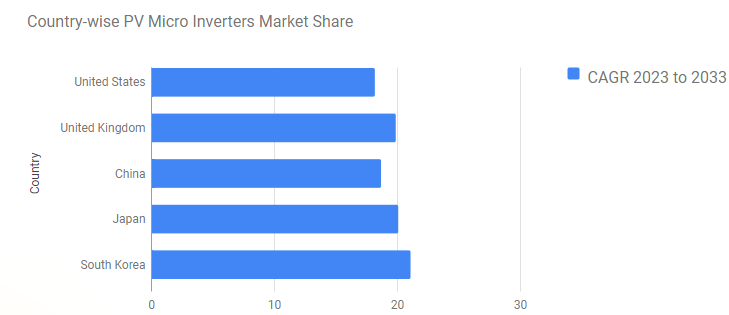In the ever-evolving landscape of solar energy, PV microinverters are emerging as a disruptive force. These innovative devices are transforming the way solar panels operate, unlocking new possibilities for maximizing energy production and system efficiency. Let’s delve into the applications of PV microinverters and explore the key factors propelling their growth in the solar power industry.
Empowering Every Panel: Applications of PV Microinverters
PV microinverters represent a significant departure from traditional solar panel setups. Unlike conventional string inverters that handle the entire array of panels collectively, microinverters are installed behind each individual panel. This distributed approach offers several advantages:
- Modular Design and Scalability: Microinverter systems can be easily scaled by adding or removing panels, making them ideal for both residential and commercial rooftop installations with varying size requirements.
- Enhanced Performance: Microinverters convert direct current (DC) electricity generated by each panel directly into alternating current (AC) electricity. This eliminates power losses that can occur in string inverter systems due to shading, mismatches, or panel failures.
- Improved Reliability: Since each panel has its own microinverter, a malfunction in one panel doesn’t affect the performance of the entire system. This ensures greater reliability and simplifies troubleshooting.
- Greater Design Flexibility: Microinverters offer more flexibility in solar panel placement, as shading or mismatched panels have a lesser impact on overall system output. This allows for optimized roof space utilization.
- Performance Monitoring: Many microinverters come equipped with built-in monitoring capabilities, enabling individual panel performance tracking and real-time system optimization.
Get Exclusive Sample Copy of the Report: https://www.futuremarketinsights.com/reports/sample/rep-gb-17922
A Market Poised for Growth: Factors Driving Demand
The PV microinverter market is experiencing a surge in popularity driven by several key trends:
- Rising Demand for Distributed Solar: The increasing adoption of rooftop solar installations, particularly in residential and commercial sectors, is creating a strong demand for modular and scalable solar solutions that microinverters perfectly address.
- Focus on System Efficiency: With growing concerns about maximizing energy output from solar systems, microinverters’ ability to minimize power losses and optimize panel performance is a major selling point.
- Technological Advancements: Advancements in microinverter technology are leading to more efficient, compact, and cost-effective devices, making them a more attractive option for a wider range of applications.
- Smart Grid Integration: The ability of some microinverters to communicate with smart grids allows for optimized energy management and grid stability improvements as solar penetration increases.
- Growing Focus on Reliability and Safety: Microinverters offer inherent safety advantages by eliminating high-voltage DC wiring on the roof, a growing concern for homeowners and installers.
According to a Future Market Insights (FMI) report, the global PV micro inverters market value is estimated to increase from USD 1132.6 Million in 2023 to USD 4630.0 Million by 2033. Overall sales of PV micro inverters are likely to surge at 15.1% CAGR during the assessment period.

Challenges and Considerations
Despite the promising future, the PV microinverter market also faces some challenges:
- Higher Initial Cost: Microinverter systems typically have a higher upfront cost compared to traditional string inverter setups. However, the long-term benefits in terms of performance and reliability can offset the initial investment.
- System Complexity: The increased number of components in a microinverter system can add complexity to installation and maintenance processes.
- Limited Installer Experience: As a relatively new technology, widespread adoption may be hampered by a lack of experienced installers familiar with microinverter systems.
Get Full Report Now. https://www.futuremarketinsights.com/checkout/17922
